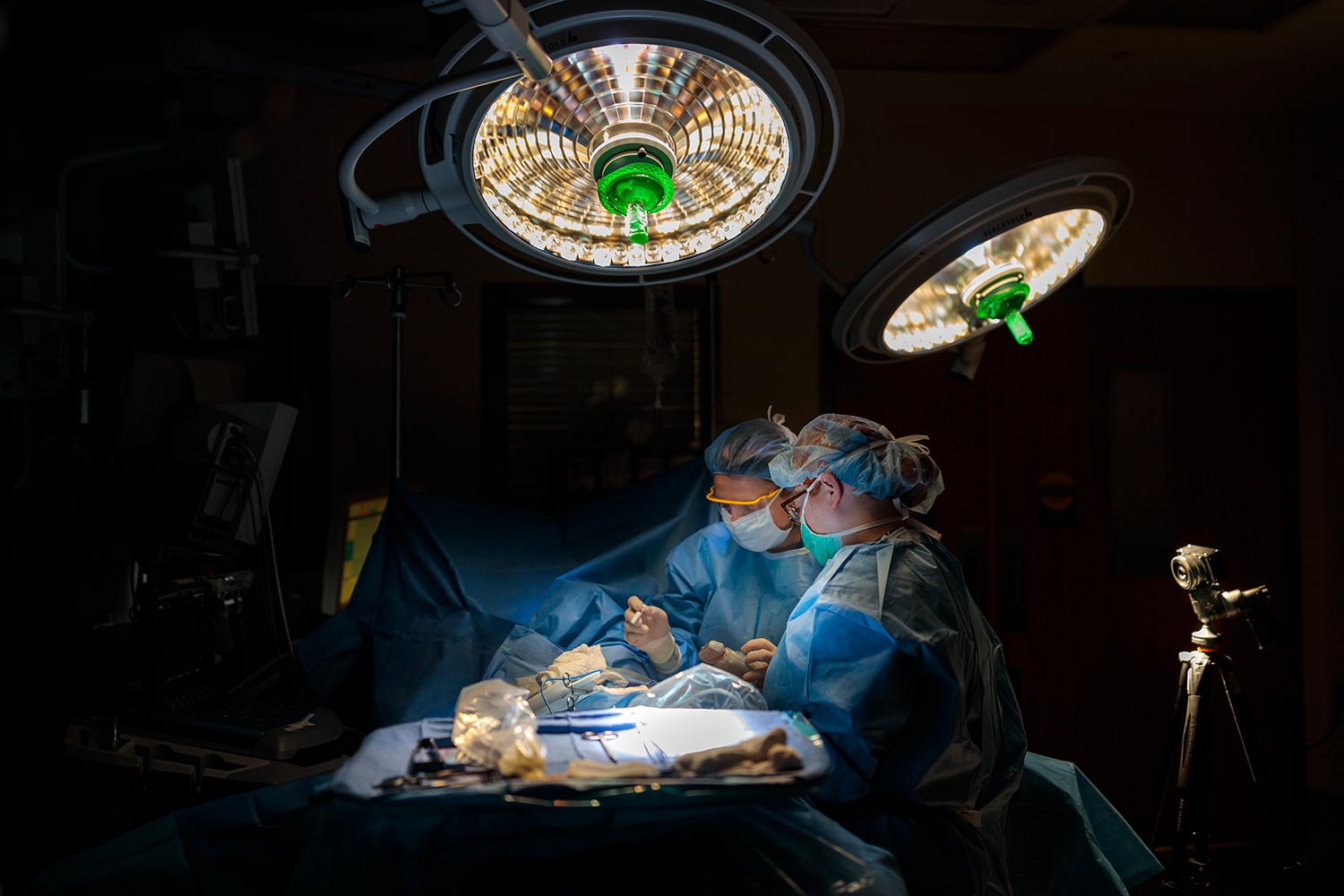Surgery is a mainstay of cancer treatment. Typically, surgeons rely solely on what they can see with their eyes and feel with their fingers to make sure they remove the whole tumor. Now, at some larger cancer centers, surgeons are investigating whether experimental tumor-binding dyes can help them delineate the tumor’s edges. These special dyes are injected near the tumor prior to surgery, and the cancer cells absorb more of the dye than nearby healthy tissue. This highlights the tumor in bright colors that can be seen by specialized cameras set up in the operating theater.
Currently, a surgeon using the experimental fluorescent dyes must operate in a dimly lit room and look away from the patient and up at a large monitor to see the tumor highlighted by these dyes. In the future, this may not be the case. A team of researchers led by Viktor Gruev, an associate professor of electrical engineering at the University of Illinois Urbana-Champaign, is developing goggles and imaging sensors that allow surgeons to see the cancer cells directly, rather than having to turn away from the patient to look at a monitor.
Gruev says that because the technology is relatively low-cost, compact and can work under normal lighting, it has the potential to be helpful to surgeons in smaller or rural medical centers, where operating rooms are often small and using large screens is not feasible. He also thinks the goggles could be integrated into many types of surgical procedures fairly easily.
But it’s not always simple for surgeons to change the way they work. “The goggle-mounted [projects] are still a little more futuristic, at this point,” says Brian Pogue, a bioengineer and medical physicist at Dartmouth College in Hanover, New Hampshire. “Most surgeons are used to just looking at the tissue, if it’s an open surgery. Or, if it’s a minimally invasive surgery, they’re used to looking at a TV screen. The goggles are a new paradigm. Some won’t want something on their head. But some will. It’s going to be very case-specific.”
Cancer Today magazine is free to cancer patients, survivors and caregivers who live in the U.S. Subscribe here to receive four issues per year.





